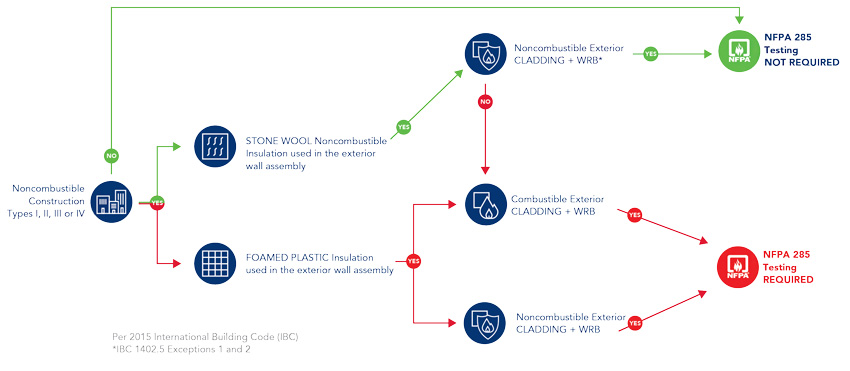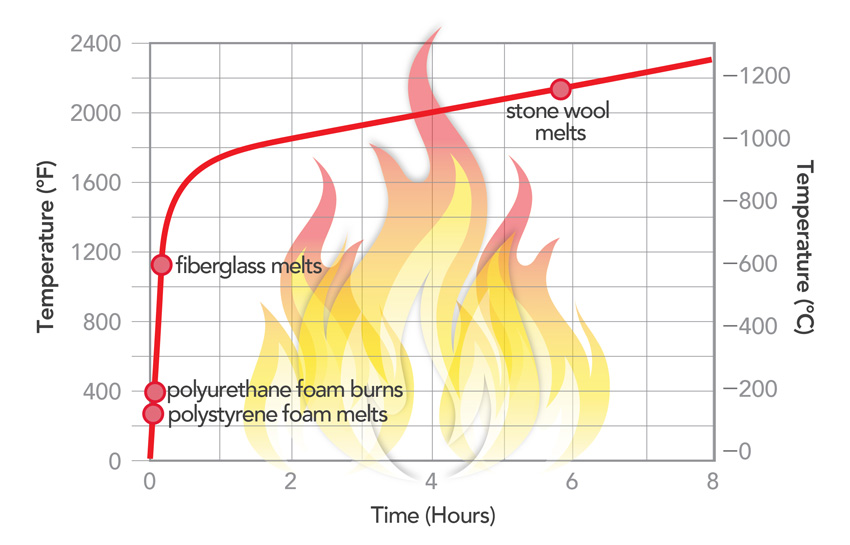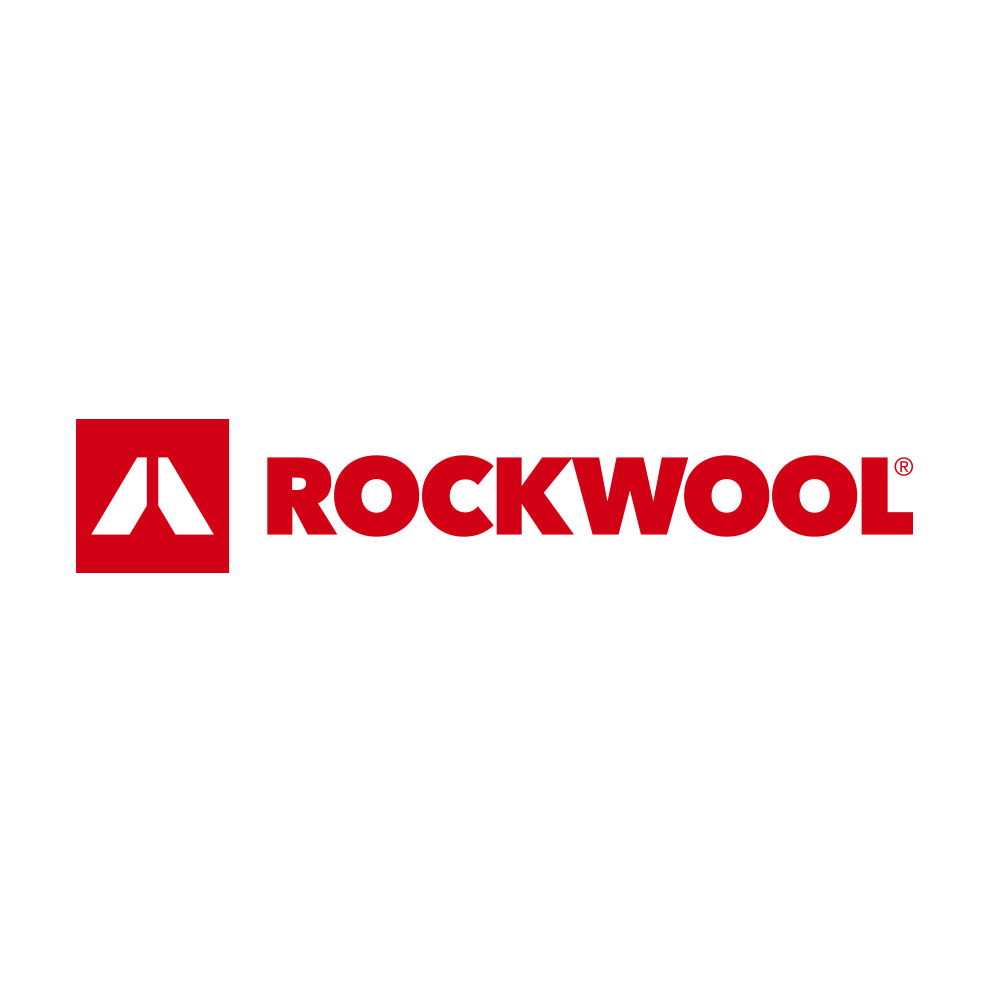Balancing Fire and Energy Code Requirements in Exterior Walls
 1 AIA LU/HSW; 0.1 IACET CEU*; 1 AIBD P-CE; AAA 1 Structured Learning Hour; This course can be self-reported to the AANB, as per their CE Guidelines; AAPEI 1 Structured Learning Hour; This course can be self-reported to the AIBC, as per their CE Guidelines.; MAA 1 Structured Learning Hour; This course can be self-reported to the NLAA.; This course can be self-reported to the NSAA; NWTAA 1 Structured Learning Hour; OAA 1 Learning Hour; SAA 1 Hour of Core Learning
1 AIA LU/HSW; 0.1 IACET CEU*; 1 AIBD P-CE; AAA 1 Structured Learning Hour; This course can be self-reported to the AANB, as per their CE Guidelines; AAPEI 1 Structured Learning Hour; This course can be self-reported to the AIBC, as per their CE Guidelines.; MAA 1 Structured Learning Hour; This course can be self-reported to the NLAA.; This course can be self-reported to the NSAA; NWTAA 1 Structured Learning Hour; OAA 1 Learning Hour; SAA 1 Hour of Core Learning
Learning Objectives:
- Identify and recognize the fundamental requirements of the International Building Code (IBC) related to noncombustible exterior walls in the code-defined types of construction.
- Assess the impact on the design of exterior walls as prescribed by the insulation requirements of the International Energy Conservation Code (IECC).
- Investigate and review the purpose, intent, and specific details of the fire-propagation testing standard known as NFPA 285.
- Explore different design options for exterior walls that are fully code compliant, safe, and energy efficient.
This course is part of the Durability Academy
- Conditions of acceptance: Among the data collected, the test is designed to identify two crucial items: what temperatures were reached in different places of the tested specimen and where the flames traveled. Generally speaking, the tested specimen must not heat above established temperatures (500–1,000 degrees above ambient temperature depending on specific location), and flames must not spread vertically into the second floor or horizontally past the side walls of the test apparatus.
- Report: Based on all of the above, the independent laboratory issues an objective and factual report following the format identified in Chapter 11 of the standard. If the report indicates that the tested wall assembly fell within the conditions of acceptance of the test, then the design and construction team can submit that to a code-enforcement official as evidence of meeting the NFPA 285 standard and complying with the IBC. In essence, the interpretation can be made that, even though there are combustible materials in a wall otherwise required to be noncombustible, the testing proves that this particular wall assembly prevents fire propagation and spreading similar to the way a noncombustible wall might. Therefore, there is no threat to public safety, and the tested wall can be allowed under the code. On the other hand, if the report indicates that the test specimen did not fall within the conditions of acceptance, then the wall assembly fails and cannot be accepted for use under the IBC. The party requesting the test can then redesign and reconstruct a new wall assembly/test specimen and engage the laboratory to conduct an additional test, repeating that process as needed until the conditions of acceptance are met.
The above summarily describes the NFPA 285 standard. The full text of the standard can be reviewed at www.nfpa.org
Design Options
When designing exterior walls, it should now be clearer what the code requirements are regarding the use of combustible and noncombustible materials. It should also be clearer as to when wall assemblies need to be tested according to NFPA 285, what that test involves, and why. With all of this as the basis, the role of a design professional is to be sure that exterior walls are designed and specified to be either fully noncombustible or, if combustible foam insulation (and in certain cases if a combustible water-resistive barrier) is used, to assure that the entire wall assembly as designed has been properly and fully tested. Not doing so puts a project in jeopardy of not receiving a building permit from a local AHJ, thus causing time delays or potential liability. Recognizing all of this, there are several design strategies that can be considered as options.
Strategies Where NFPA 285 Testing Is Required
If the design decision is made that foam plastics or other relevant items are to be included in the exterior walls, then there are basically two options. The first, and probably least costly in terms of time and money is to select and use a standard assembly that has already been tested by someone else. Information and details about such tested assemblies, including the final test report, are sometimes obtainable from product manufacturers or others. The critical point in this option is that both the design, including the precise placement of vertical and horizontal cladding panel seams, and the construction must be identical to the tested conditions. That includes the specific materials and products used, even proprietary ones, if that was the basis of the test. If a designer wants to change anything, then a different tested assembly will need to be found that includes that change or an engineering judgement will need to be made to assess the change and its effect on the fire performance. Similarly, if a contractor wants to substitute a material or a product for something in a previously tested wall assembly, that can invalidate the use of that test as a basis for code compliance. Note too that if different exterior wall types are used on a building due to differing conditions (horizontally or vertically), each of those types will need to be matched with a previously tested wall assembly that is the same as each different wall type. Nonetheless, if everyone on the design and construction teams agree to match exactly the tested conditions, this is an option.
In cases where a previously tested (or listed) wall assembly is not available or appropriate, there are only a few other options. One would be to have a fire-protection engineer or testing laboratory assess the proposed assembly and provide an engineering judgement as to the anticipated fire-propagation performance based on testing done for similar assemblies. If that is not practical or possible, then the design and construction team always has the option of arranging for, submitting, and paying for an independent laboratory to conduct the test using NFPA 285. That will require some extra time and expense, obviously, and may or may not be justified or acceptable to the project owner. On large projects with only a few wall types, it may be worth considering, but on smaller projects or projects with many different wall types, it will likely become cost-prohibitive quickly—particularly if the tested assemblies don’t meet the acceptance criteria the first or even subsequent times.

Image courtesy of ROCKWOOL™
A typical decision tree is shown here to summarize when testing per NFPA 285 is called for in the IBC or not.
Strategies That Avoid NFPA 285 Testing
As noted earlier in our discussion, there are conditions that do not trigger the code requirement for testing per NFPA 285. The first are the exceptions noted, such as designing a single-story building that includes an automatic fire-sprinkler system and meets other criteria. The other is to provide concrete or masonry on either side of plastic foam insulation, essentially encasing the combustible insulation in noncombustible materials. Alternatively, if the building is small enough and all other related code conditions can be met, it could be designed and built using Type V construction. However, with no specific provisions for the fire protection of the facade in Type V construction, there are legitimate concerns for fire safety, particularly if combustible foam plastic insulation is used. While these three code-acceptable options are possible, they may not necessarily match the owner needs, design criteria, or cost budget for the project.
A preferred strategy that allows for the greatest flexibility in design and construction is to use all noncombustible materials in the exterior wall in the first place, particularly the insulation. Without the presence of foam plastic insulation and a combustible water-resistive barrier, the IBC no longer requires the exterior wall to be tested since there is no threat of fire propagation in the wall assembly. This approach would allow common wall assemblies of noncombustible materials, such as metal framing, gypsum sheathing, metal cladding, or curtain wall panels, to first be selected based on standard preferences and project conditions. The addition of noncombustible insulation could then be incorporated in the manner that best suits the project. By using all noncombustible materials, the requirements for Type I–IV construction are satisfied and testing is no longer an issue.
What type of insulation is noncombustible? Those made of noncombustible base materials. Perhaps the best example of that is stone wool insulation. This is a type of insulation that has been around for more than 80 years and has been used in a variety of residential, commercial, and industrial applications. Stone wool insulation does not use any foam plastics, flame retardants, or blowing agents. Rather, it is manufactured out of volcanic basalt rock mixed with some recycled slag in a furnace. The melted rock is then literally spun into wool with minor amounts of binder to create the desired density of the end product as either rigid board, semi-rigid board, or batt-type insulation. That means it can be used in framing cavities in batt form and as continuous insulation in the semi-rigid or rigid board form. The stone wool fibers are typically nondirectional, which is important for achieving the multiple performance characteristics of the final product. In terms of R-value, stone wool provides very good results (R-4 or better per inch), but most notably, that performance has been shown to remain constant over time. Since there are no blowing agents, there is nothing to off-gas, meaning that the thermal resistance does not change. It also has superior qualities in regard to dimensional stability, sound attenuation, water repellency, and vapor permeance.
Because of its makeup, stone wool insulation excels in terms of meeting code requirements for noncombustible insulation. It will not develop toxic smoke or promote flame spread, even when directly exposed to fire, as most other insulation materials do. When tested in accordance with ASTM E84, stone wool typically shows a flame spread of 0 and a smoke development of 0. By comparison, spray polyurethane foam (SPUF) tested to ASTM E84 typically achieves a flame spread of 25 and smoke developed in the 350 to 500 range.
Beyond these basic fire-resistance properties, stone wool insulation has an impressive ability to withstand temperatures up to its melting point of approximately 2,150 degrees Fahrenheit (1,177 degrees Celsius). As such, it can act to contain smoke and fire when used in conjunction with appropriate fire-sealant materials, thus protecting against the spread of fire. This is quite a contrast to most other insulation materials and even many other building materials.

Image courtesy of ROCKWOOL™
A standard test procedure determines temperature development and melting points for different materials. As shown here, stone wool insulation has an extremely high melting point in comparison to other insulation materials
Since stone wool insulation does not contribute to fire, it can provide additional minutes of protection for occupants to reach safety. It can also provide fire-services personnel valuable time to both clear occupants and control the spread of fire while delaying the collapse of various structural members of the building. Again by contrast, foam plastic insulation must meet ASTM E84 ratings of a flame spread of 75 and smoke development of 450. Even at those levels, it must also be separated from the building interior by an approved thermal barrier, which does not apply to stone wool.
In short, taking the design approach to eliminate combustible materials from an exterior wall assembly can be the best option for many projects of all construction types, heights, and configurations. It provides great design flexibility, meets all code requirements, and eliminates the need for additional testing of wall assemblies.
Conclusion
The code requirements for fire safety in buildings do not need to be seen as in conflict with the energy-conservation requirements for insulating exterior walls. Having reviewed the relevant code sections of both the IBC and the IECC, it is clear that there are many design options and alternatives indicated in the codes to show compliance. Architects and other design professionals who understand the fundamental requirements and can discern the different options available have the best opportunity to achieve life safety, comfort, and energy conservation in building designs.
Peter J. Arsenault, FAIA, NCARB, LEED AP, is a nationally known architect, consultant, continuing education presenter, and prolific author advancing building performance through better design. www.pjaarch.com, www.linkedin.com/in/pjaarch
 |
ROCKWOOL® is the world’s leading manufacturer of stone wool insulation offering a full range of high-performing and sustainable insulation products for the construction industry with solutions that help create more resilient, energy-efficient, safe, and sustainable buildings. www.rockwool.com |









